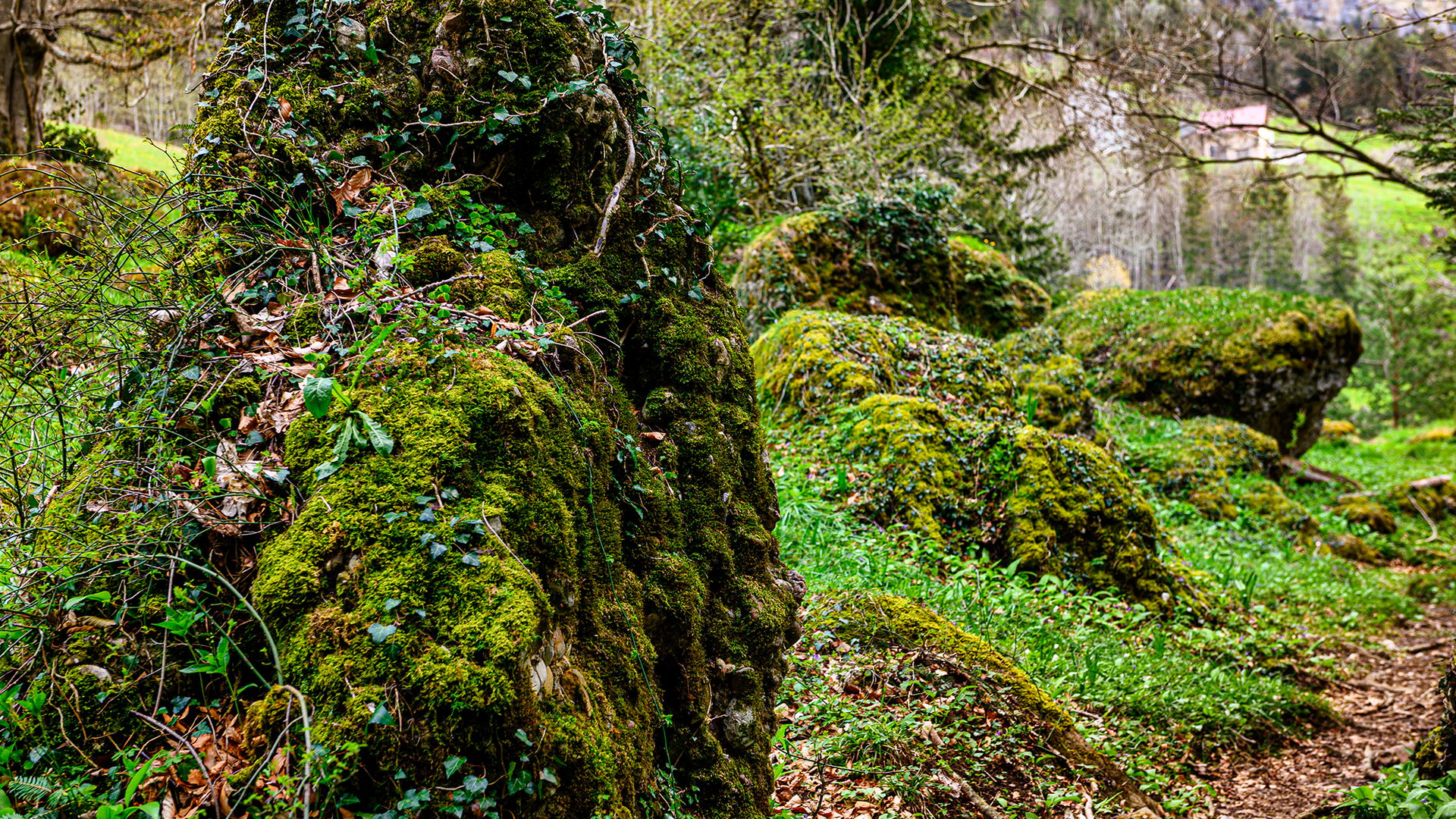Goldau landslide
"One hundred wild hills of death" by Omar Gisler
The Arth-Goldau railroad station is built on dead bodies. The traces of the landslide of 1806, which claimed 457 lives, are still clearly visible today. It was then that Swiss solidarity was born.
“Our fatherland has suffered a terrible misfortune today.” With these words, the Neue Zürcher Zeitung introduced its report on the dramatic events that took place in Goldau on September 2, 1806. Eyewitnesses later reported: “Roaring, crashing and pattering fills the air like deep roaring thunder: whole stretches of torn-off earth - pieces of rock as big and even bigger as houses - whole rows of fir trees are hurled upright and floating through the thickening air with more than the speed of an arrow. The previously paradisiacal area is transformed into a hundred and one wild mounds of death.”
The disaster did not come out of the blue. Rather, it had been a long time in the making and had been announced in advance: during the last great upheaval of the Alps eleven million years ago, layers of Nagelfluh, marl and sandstone were thrown up on the Rossberg with a slope of up to thirty degrees. Over the course of thousands of years, water seeped into fissures and crevices. In the weeks leading up to the accident, when it often poured down like buckets for days on end, large fissures and cracks were discovered on the Rossberg. Shepherds and woodcutters were only able to cross them using footbridges. However, they did not worry too much about this.
A devastating evening
On September 2, 1806 at around 5 p.m., fate took its course: the rock on the Gnipen, the western peak of the Rossberg, broke off. The marl layer under the hard Nagelfluh was so softened that it turned into a fatal slide. Forty million cubic meters of rock thundered down into the valley. Within a few minutes, the settlements of Goldau, Röthen and parts of Buosingen were buried under a layer of rubble up to fifty meters high. The rock avalanche shot across the valley floor and roared 120 meters up to the Rigi. An offshoot even reached Lake Lauerz, 2.5 kilometers away, and triggered a tidal wave there. This tsunami claimed several lives in the villages of Lauerz and Seewen. The results of the Goldau landslide, as the geological event went down in the history books, were devastating:
457 fatalities, 323 dead cows and cattle, 111 buried dwellings, 220 destroyed barns and stables and 4 buried churches and chapels.
News of the landslide spread like wildfire throughout the Confederation. The very next morning, relief workers from the neighboring cantons of Zug and Lucerne set off. Support from Zurich and Bern arrived shortly afterwards. These spontaneous relief efforts are regarded as the birth of Swiss solidarity. Collection campaigns raised 165,000 francs, a sum that today is worth 38 million francs.
Reconstruction and remembrance
Gradually, new life returned to the ruins. First, the Goldau residents who had survived the disaster rebuilt the much-used transit road before building the Pfrundhaus, a multi-purpose building. This was followed by the Gasthaus Rössli, which still exists today under the same name. However, Goldau owes its real resurrection to the Gotthard Railway. Plans to tunnel under the rockslide area were quickly abandoned. Instead, the Arth-Goldau transportation hub was created, which also includes the mountain railroad to Mount Rigi. At first it was construction workers who breathed new life into Goldau. Then tourists supported the upswing. Alongside the railroad station, the Church of the Sacred Heart became a symbol of the reconstruction. Its foundation stone was laid on September 2, 1906, exactly one hundred years after the landslide. It was built largely by laborers and entirely from Nagelfluh stone. The Goldau church is therefore not just a place of worship, but an actual landslide memorial.
The memory of the tragic events is also preserved in the landslide museum, which was opened in 1966 next to the entrance to the zoo. Impressive relics can be seen there, such as the braid of a little girl covered in a layer of clay, or a crucified man made of bronze, whose arms were bent downwards by the pressure of the rock. Sometimes there are also macabre finds. In April 2012, for example, construction workers came across three skeletons while excavating for a new building. The bones had multiple fractures and deep abrasions typical of buried victims. Investigations revealed that they were the remains of Karl Bürgi, his wife Marianna Schön and their daughter Agatha. The family had been surprised by the landslide in their house.
New danger?
Is there another landslide, is the question being asked everywhere in Goldau? The answer must be yes. The geological constellation of the 1580 meter high Rossberg will inevitably lead to landslides again. Its flank has been monitored with sensors since 1990. The smallest shifts are registered immediately so that the inhabitants can be evacuated in good time, which was not the case in 1806. At that time, people also did not know that their village stood on a landslide from prehistoric times, which had filled up the watershed between Lake Zug and Lake Lauerz with a volume of a good hundred million cubic meters. Few people were aware of the origin of the name “Goldau”. It does not refer to a golden meadow landscape, as one might think. Rather, it comes from the Celtic word “golet”, which means “debris”.
Hike through the landslide area
From Arth-Goldau railroad station, a varied hike leads through the landslide area, which is now a cantonal plant reserve. You should allow three and a half hours to complete the “Goldau landslide trail”. The circular hike is particularly beautiful in early summer, when the numerous orchids along the trail are in full bloom.
